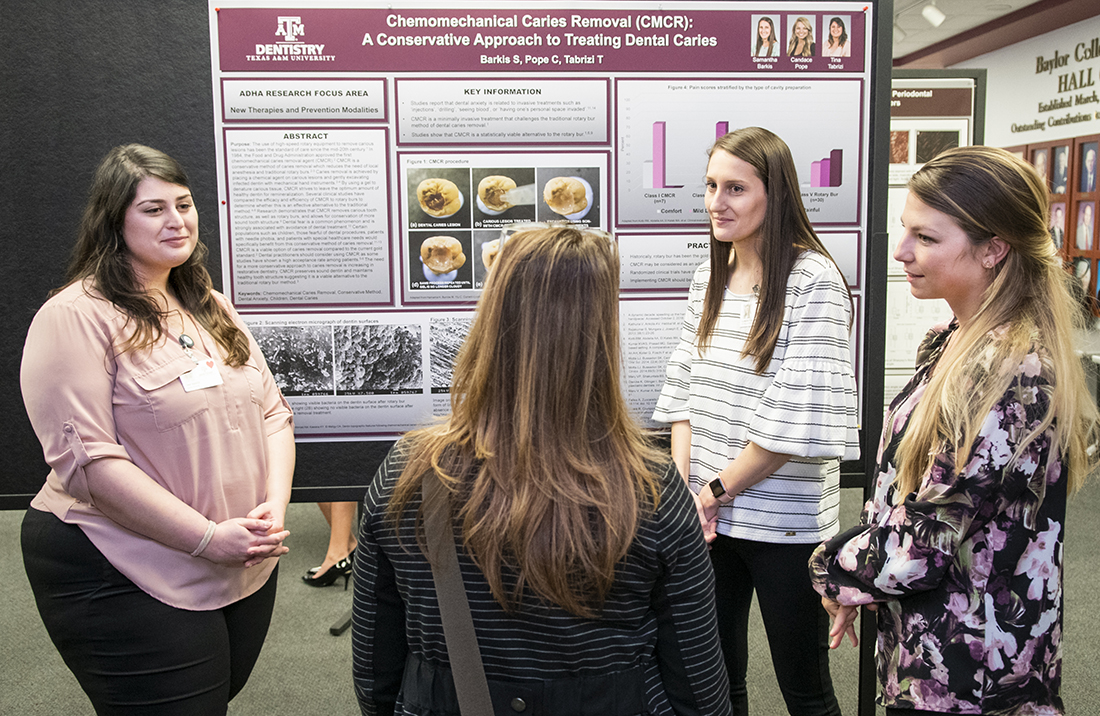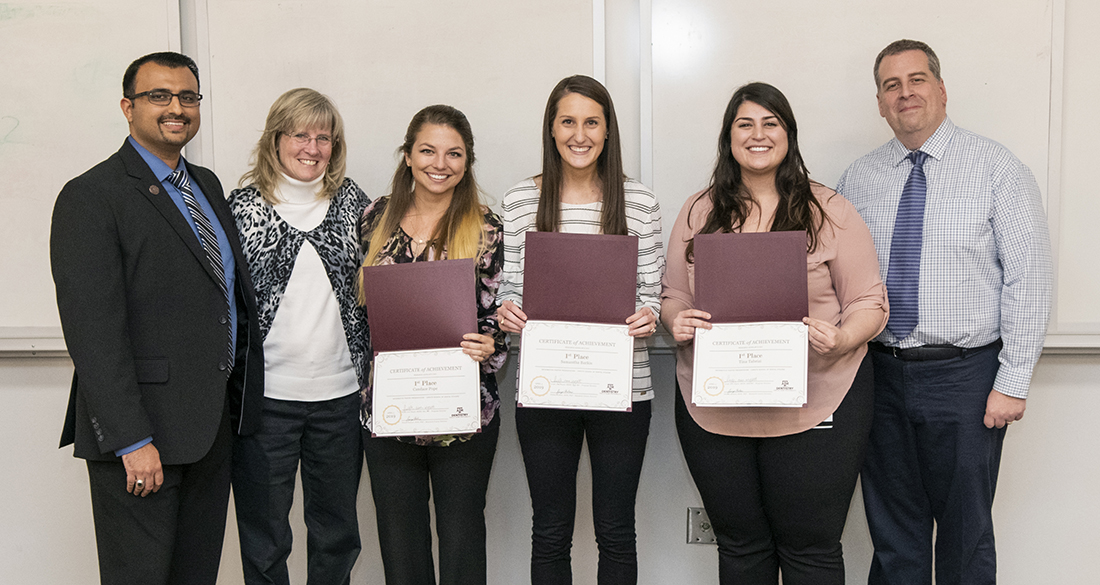A different kind of drill

Prepare for a filling without using a drill? There’s a gel for that, say second-year dental hygiene students Samantha Barkis, Candace Pope and Tina Tabrizi. They hope their investigation into a treatment used overseas will spark further research in the U.S.
This gel-based treatment employs an active ingredient derived from papaya extract that only affects the cavity, not healthy dentin, Barkis explains. The carious lesion is removed with a hand instrument until the gel is no longer cloudy, then the cavity is ready to be filled. Anesthesia is not required, a plus for some patient populations. The method is not used on deep carious lesions, she adds.
“Just knowing about an option for fearful patients or those with special needs could be useful,” Barkis says.

The team’s informative research project, “Chemomechanical Caries Removal: A Conservative Approach to Treating Dental Caries,” led to first-place awards April 3 at Texas A&M College of Dentistry’s Research Scholars Day and the Dallas Dental Hygienists’ Association poster competition. The winning streak began Feb. 2 with a top finish at the Texas Dental Hygienists’ Association annual meeting, the third consecutive year for Caruth School of Dental Hygiene students to place in that poster competition.
With Caruth faculty mentors Kathy Muzzin, clinical professor, and Dr. Faizan Kabani, assistant professor, the students invested countless hours investigating their topic and practicing their presentation in front of both classmates and previous winners — now alumni — who returned to campus to offer advice.
“Their fresh perspectives helped discover holes in our presentation so we could enhance it,” Barkis says.
The researchers praise their faculty mentors, who assisted with details ranging from the scientific process to the successful presentation.
“Ms. Muzzin was amazing,” Pope says. “She stayed late helping translate scientific articles, interpreting intricate graphs, helping us understand the mechanism of action and comparing this to the rotary bur.”
Kabani advised the students to enter the project without bias. “He told us, ‘Your end goal is not to make it what you want it to be but to show the findings objectively,’ says Tabrizi, who was new to research. “I enjoyed finding something new and interesting and innovative.”
Muzzin is intrigued by the prospect of a less painful method for addressing a universal dental problem. “Dental practitioners now have a viable treatment option for dental caries,” she says.
According to Kabani, the chemomechanical caries removal method “truly challenges the traditional gold standard rotary bur method in treating dental caries. Dental providers should consider implementing CMCR as part of their evidence-based practice, particularly for patients who can benefit from this less invasive approach.”
